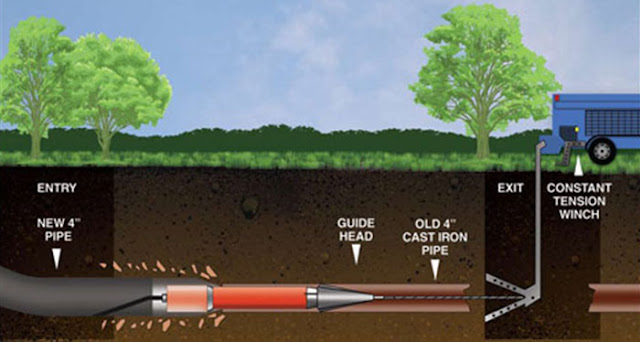What you need to know about Directional drilling company financing
It can be difficult to control a directional drilling company's financial flow. They experience a standard cash flow problem, like the majority of construction enterprises. They have a short payment deadline for expenses yet a 60-day pay period. This could result in a cash flow problem for the business, making it difficult to fulfill obligations or bring on new customers. Thankfully, there are a couple of solutions to this issue. In this piece, we go over:
Slow payments and net terms
Create a cash reserve as the first option.
Finance construction receivables as a third option (slow-paying invoices)
Advantages
Qualification
Net-30 terms are detrimental to cash flow.
Contract provisions that permit clients to pay invoices in 30, 45, or 60 days are found in the majority of utility, commercial, and construction projects. For business clients, getting four to eight weeks to pay an invoice is a terrific deal. They have up to 60 days to utilize your services before having to pay for them thanks to this delay. Offering payment arrangements, however, is not advantageous for your business.
Offering net terms can harm your cash flow. The majority of small drilling and directional drilling company lack the financial wherewithal to wait a month or longer for payment. They require money to cover other costs, such as paying suppliers and workers. Your directional drilling company is exposed as a result of this predicament.
Create a cash reserve as the first option.
The most straightforward but most challenging strategy is to accumulate a cash reserve. On the whole, though, it's usually the best option over time. As a cash reserve, your organization should aim to accumulate a few months' worths of operating costs. The reserve enables the company to continue operating while anticipating customer payments. You can create a cash reserve by placing some of your earnings into a savings account.
However, creating a reserve entails an opportunity cost. Reserve money shouldn't be used for other things. As a result, they remain in the account. The needs of the business and its expansion goals must be carefully balanced while creating a reserve fund.
Offer discounts for early payments as a second option.
By rewarding customers for making early payments, you can increase your cash flow. If clients pay their invoices within ten days, these services offer a 1%–2% discount. If not, the client makes the full payment according to their customary terms. These discounts are popular with clients since they help them save money.
Early payment discounts have some drawbacks even though they are helpful for cash flow. The fact that they are unpredictable is the main problem. It's challenging to predict whether a client will decide to pay in advance or not. Additionally, during recessions, when you most need speedy payments, customers are less likely to take advantage of discounts.
Consider financing your invoices from slow-paying clients if you are unable to accumulate a cash reserve and early payment discounts are insufficient.
Finance construction receivables as a third option.
Utilizing construction factoring to finance your slow-paying accounts receivable is another strategy to increase your cash flow. With this option, your firm will have access to rapid funding for operating costs and business expansion.
Many of the benefits of quick payments are offered via factoring, although customers are not required to make payments any faster. An advance is instead given for your slow-paying receivables by a factoring provider. While you get funds, the finance firm holds the invoice and awaits payment.
What is the process of construction factoring?
Your bills are paid for by the factoring provider in two installments. The advance is the name given to the initial payment. About 80% of the gross amount of your invoice is covered by the advance. After the task is finished and the invoice is confirmed, the money is put into your account. Once your client has paid the invoice in full, the second payment, which covers the remaining 20% (minus costs), will be put into your account.
Retainage bills should be noted as they cannot be included due to their payment schedules.
a) Progress payments vs. footnote billing
The majority of directional drilling company feels at ease financing bills using distance-based pricing, like by the foot or yard. Progress payments are used by certain directional drilling businesses, nevertheless. These bills reflect the proportion of the work that has been completed. Progress payments are more difficult to finance than regular payments. Only a small number of specialized factoring businesses deal with invoices for progress payments.
c) Benefits
Your business may benefit greatly from factoring in your invoices. It enhances your cash flow and positions you better to run your directional drilling business. Additionally, it enables you to offer clients payment periods without worrying about late payments. Using factoring software can change the game if you were turning away business or if offering terms was restricting your expansion.
The line is adaptable and may be utilized to expand the directional drilling company. The line can increase along with your revenues, unlike the majority of conventional loans or lines of credit. Due to its flexibility, construction factoring is a great choice for directional drillers who are expanding but are experiencing cash flow issues because of slow-paying customers.
c) Qualifications needed
It is simpler to qualify for a directional drilling company than it is to get alternative options. These are the primary prerequisites:
A minimum of $100,000 in invoices (if using progress payments)
Possess clients with excellent commercial credit
The invoices must not have any liens or encumbrances.
Payroll taxes need to be current (or have a payment plan)
We are a top directional drilling company and can offer you favorable terms. Get a quote online or call us for more details.



.jpg)


Comments
Post a Comment